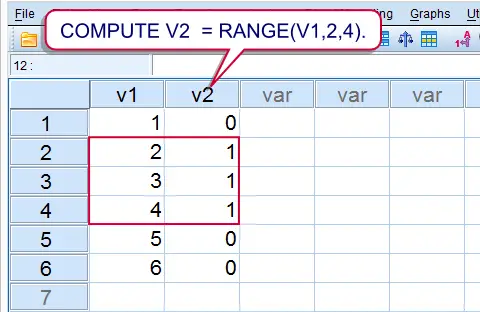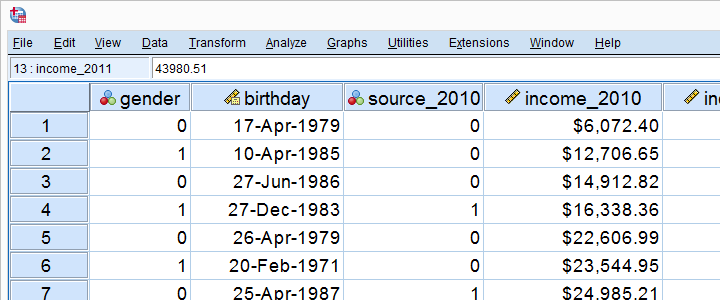

if you made some mistake -don't we all sometimes?- you can correct it and rerun everything you did in just seconds.you'll always know exactly which steps you took in which order so you can prove that your results are correct.The single best SPSS practice is doing everything from syntax. Just leave and ignore this, it's not meant for you but, rather, some kind of “note to self” from SPSS. When saving syntax in newer SPSS versions, something like You can open, edit and save it with SPSS or any text editor such as Notepad++. sps (for “SPSS syntax”) file extension and is a plain text file. We can now save all contents of our Syntax Editor as a syntax file by going to This will take some practice but it will save you tons of time and effort in the longer run. So if you want to get real good -and real fast- with SPSS, start learning short syntax. Just typing and running this is much faster and easier than clicking through all menu options. The syntax we just pasted from the menu was: Typing syntax is much easier than it seemsīecause most of it can be dramatically simplified. Now, typing syntax may seem like a crazy thing to do at this point. type the commands you need into the syntax window.copy-paste syntax from our tutorials, online forums and elsewhere.If you've a syntax window open, you still need the actual syntax. drag and drop a syntax file into the Data Editor window (shown below).If you don't have a syntax window open yet, it'll open one for you.
#Spss 23 service not running how to
So how to get syntax? First off, using the Paste button from the menus adds syntax to your syntax window. The right way to do basically anything in SPSS -editing and analyzing data, creating tables and charts and more- is by running syntax. This is an output window which we'll discuss in our next tutorial. On doing so, a new window will open, containing our frequency table and barchart. Ctrl + r for running all selected commands.F2 for selecting the command in which your mouse pointer is located.The simplest way to run syntax is to select the command(s) you'd like to run and click the “run selection” icon in your toolbar.Ī faster way to run syntax is to use several shortkeys, especially This is because we still need to run the command we just created. However, we don't see the frequency distribution and bar chart we asked for. The Syntax Editor contains a FREQUENCIES command which holds the instructions we just gave SPSS in the Frequencies dialog. It's recognized by the orange icon in its left top corner. Upon doing so, a new SPSS window opens which is known as the Syntax Editor. A much better idea, however, is to click the Paste button. Now clicking Ok may seem the obvious thing to do. I'll now move gender into the variable box and perhaps request a bar chart as well. I could first navigate toĪnalyze D escriptive statistics Frequencies Now let's suppose I'd like to gain some insight into the percentages of male and female respondents.
#Spss 23 service not running download
So let's download and open bank.sav -partly shown below- and jump right in.

However, this is a terrible practice and we'll explain why in a minute. SPSS users working directly from the menu may not actually see they syntax they're running. SPSS syntax is a language containing instructions forĪnalyzing and editing data and other SPSS commands.

SPSS Syntax Introduction By Ruben Geert van den Berg under Basics


 0 kommentar(er)
0 kommentar(er)
